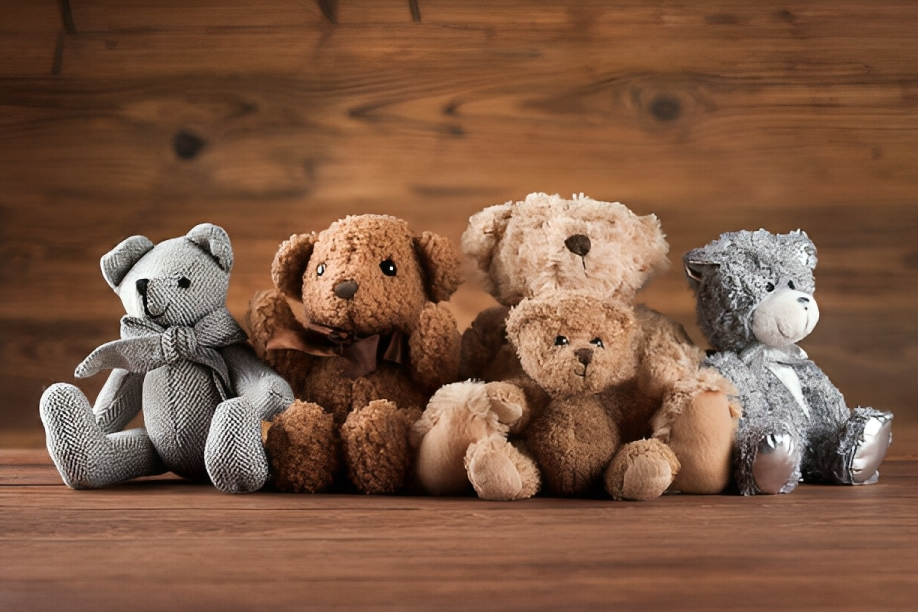

· By The Wakaii Team
The Educational Benefits Of Plushies
Ever wondered if those adorable plushies you're snuggling with have more to offer than just comfort?
Well, you're in for a treat.
This blog aims to explore the often-overlooked educational benefits of plushies.
Let's dive in!
The Emotional Comfort of Plushies
We've all been there—those nights when we just need a cuddly friend to get us through.
But did you know that the emotional comfort provided by plushies goes beyond just feeling good?
Research shows that the sensation of holding a plushie can actually stimulate the release of oxytocin, the "feel-good" hormone.
This not only calms the nervous system but also aids in emotional development, particularly in children.
More on the emotional benefits of plushies here!

Social Skills Development
Remember playing tea party with your plushies as a kid?
Or perhaps you've seen your child engage in a full-on conversation with their stuffed animal.
It's not just adorable; it's educational!
Role-playing with plushies can significantly help in developing social skills.
These cuddly toys serve as a safe and non-judgmental space for children to practice real-world interactions.
They learn to share, communicate, and even resolve conflicts, all in the comfort of their playroom.

Real-World Example:
Take the story of Timmy, a shy 4-year-old who had difficulty interacting with his peers.
His parents introduced him to a set of animal plushies, each with its own name and personality.
Through role-playing, Timmy learned to express himself and even started to understand the concept of empathy.
Fast forward to today, and he's much more confident in his social interactions.
Language Skills Enhancement
"Mr. Bunny says 'Hello!'" Sounds familiar? Interacting with plushies can be a fantastic way to enhance language skills.
Children often mimic real-life scenarios with their stuffed animals, which helps them learn new words and improve their vocabulary.
Even for adults, plushies can serve as a fun and interactive way to learn a new language.

Did You Know?
Studies have shown that children who engage in imaginative play with plushies tend to have a richer vocabulary compared to those who don't.
So, the next time you hear your child having a conversation with their plushie, remember they're not just playing - they're learning!
Fostering Creativity and Imagination
Let's face it, the world of plushies is a realm of endless possibilities.
One minute, your plushie is a brave knight in a medieval castle, and the next, it's an astronaut exploring the far reaches of the galaxy.
This imaginative play is not just child's play; it's a critical component of cognitive development.

The Science Behind It
Research indicates that imaginative play enhances creative thinking and problem-solving skills.
When a child engages in scenarios that involve their plushies, they're actually exercising their brain's ability to think outside the box.
The Role of Plushies in Emotional Intelligence
Emotional intelligence is a buzzword these days, but did you know that the foundation for this crucial skill is often laid in childhood?
And you guessed it—plushies can play a significant role here.

How It Works
Children often project their feelings onto their plushies.
For instance, a child might say, "Mr. Bear is sad today."
This externalization allows them to better understand and manage their own emotions.
Over time, this understanding evolves into emotional intelligence, a skill that's invaluable in navigating the complexities of human interaction.
Plushies in Special Education
The educational power of plushies isn't limited to mainstream settings; they're also making waves in the field of special education.
Teachers and therapists often use plushies as educational aids to help children with special needs.
Case Study
In a school for children with autism, plushies were used as part of the curriculum to teach social cues and emotional recognition.
The results were astounding.
Children showed marked improvement in their ability to recognize emotions, both in themselves and others.
How to Choose an Educational Plushie
So, you're convinced about the educational prowess of plushies and want to get one?
Great decision! But wait, what should you look for?
-
Material: Opt for non-toxic and hypoallergenic materials
(like ours at Wakaii!) - Interactivity: Some plushies come with built-in educational features like numbers, alphabets, or even simple puzzles.
- Age-Appropriate: Make sure the plushie is suitable for the child's age.(More on choosing the perfect plushie for your baby here)
Conclusion
From emotional comfort to cognitive development, plushies truly are the unsung heroes of the toy world.
So, what do you think about the educational benefits of plushies? We'd love to hear your thoughts! Feel free to share them in the comments below.
If you're now inspired to add a new plushie to your collection, don't miss out on our kawaii plushies collection, from kawaii dog plushies to cute sea animal plushies, we've got it all!
And hey, if you found this article helpful, why not subscribe to our newsletter? You'll get a sweet deal of 15% off your next order.
Trust us; you don't want to miss out on the plushie goodness coming your way!
FAQs
While plushies can be suitable for all ages, educational plushies are often designed with specific age groups in mind. Always check the manufacturer's age recommendations to ensure the plushie is appropriate for your child's developmental stage.
Yes, plushies are often used in special education settings to help children with social cues, emotional recognition, and even motor skills. However, it's essential to consult with a healthcare provider or educational specialist for personalized advice.






